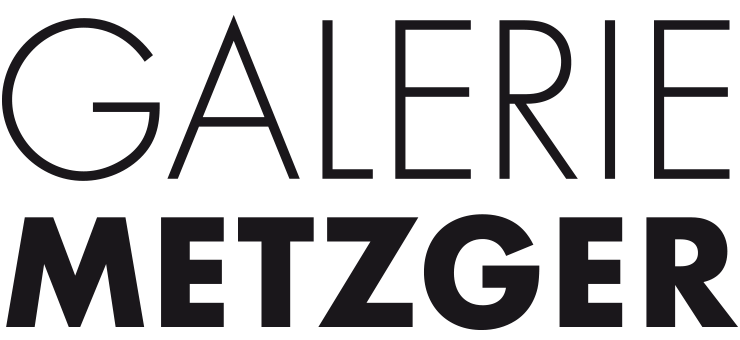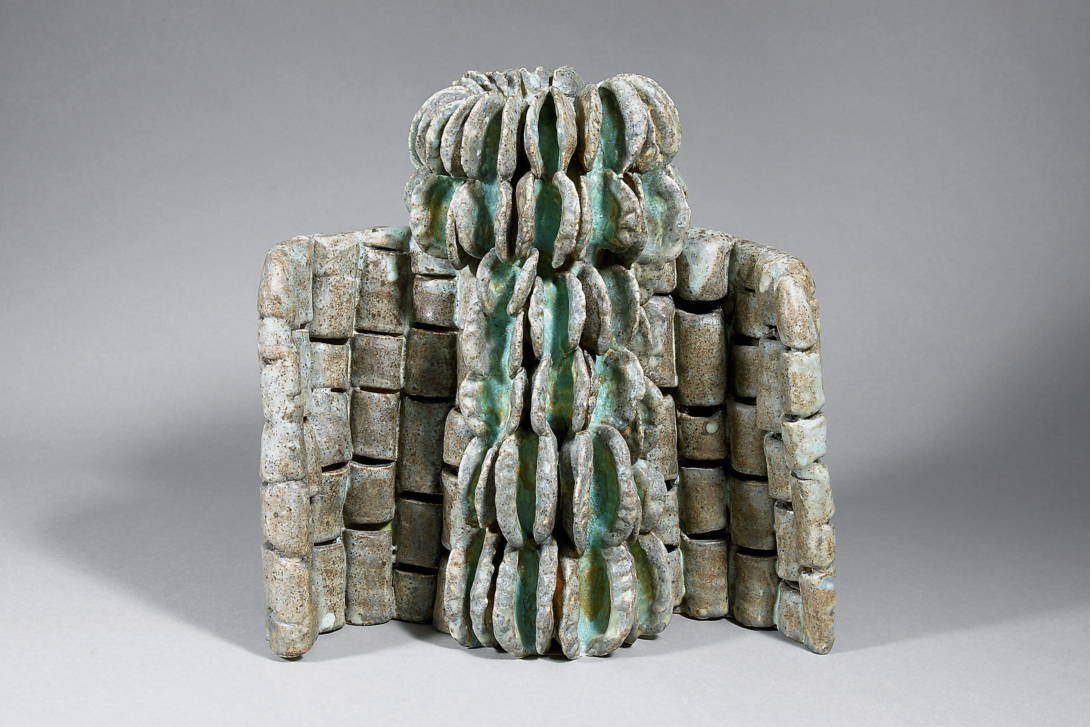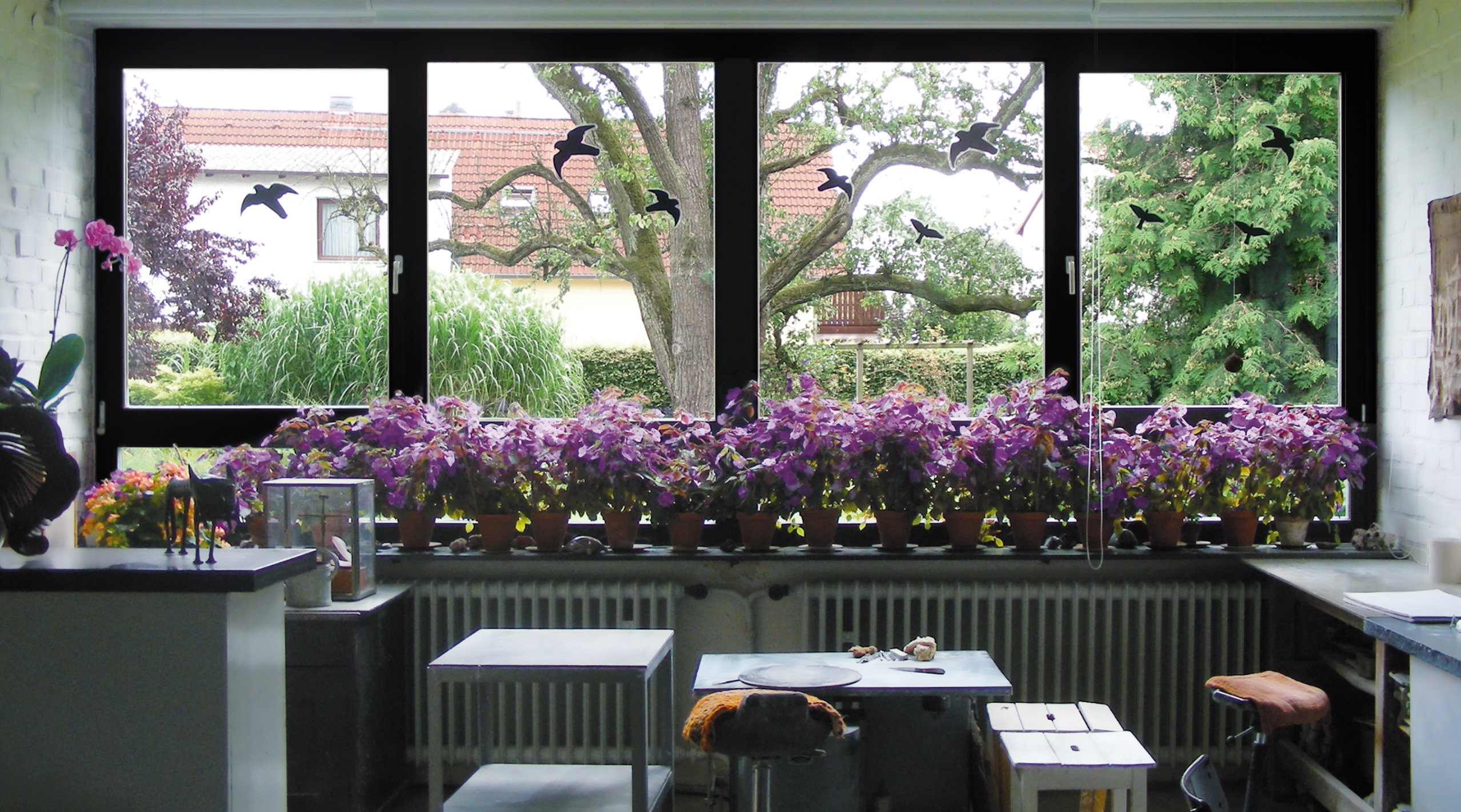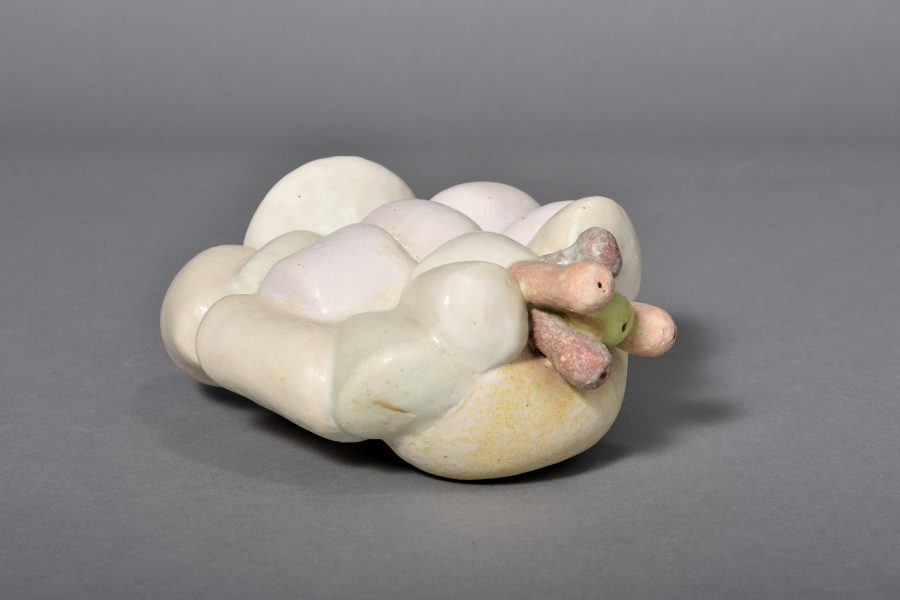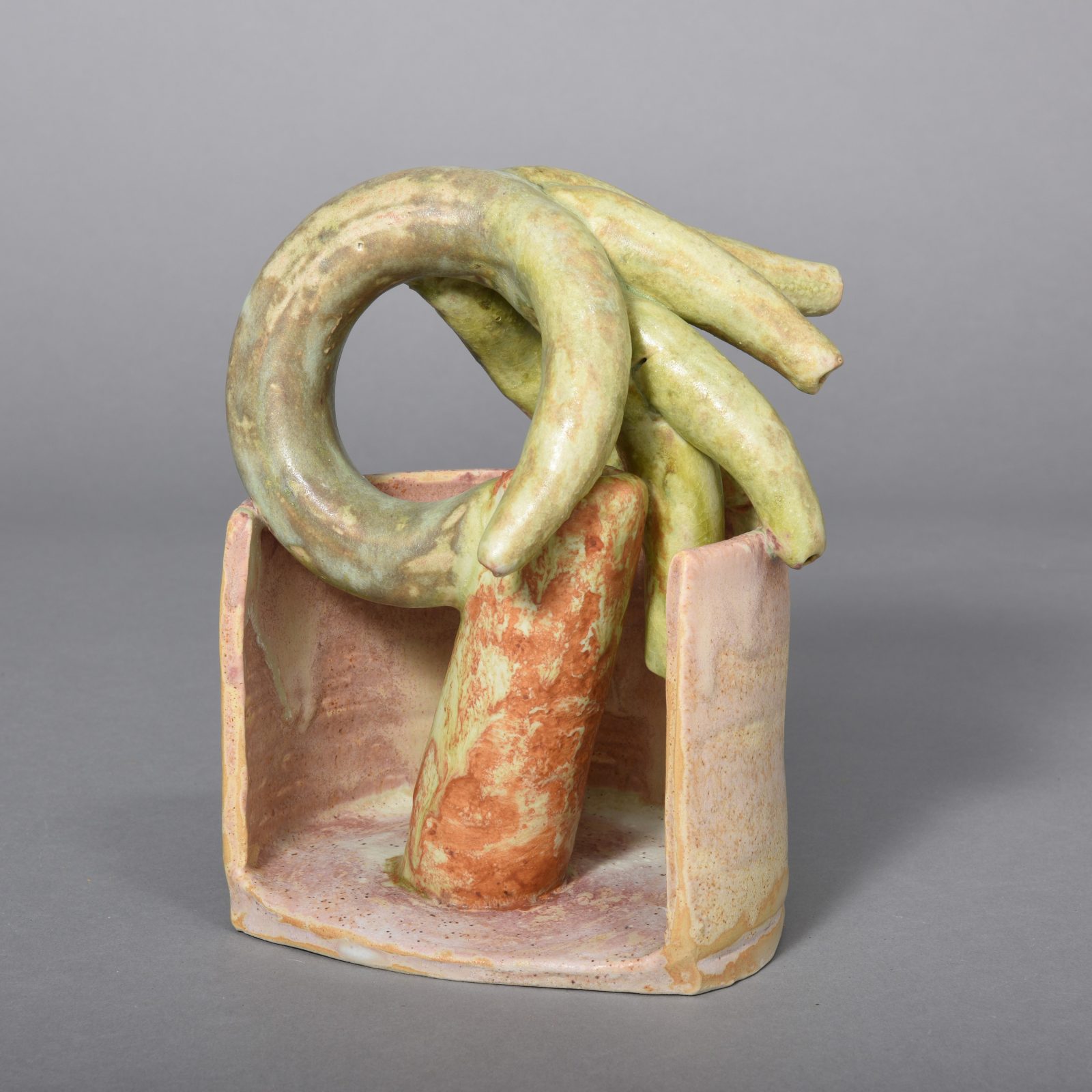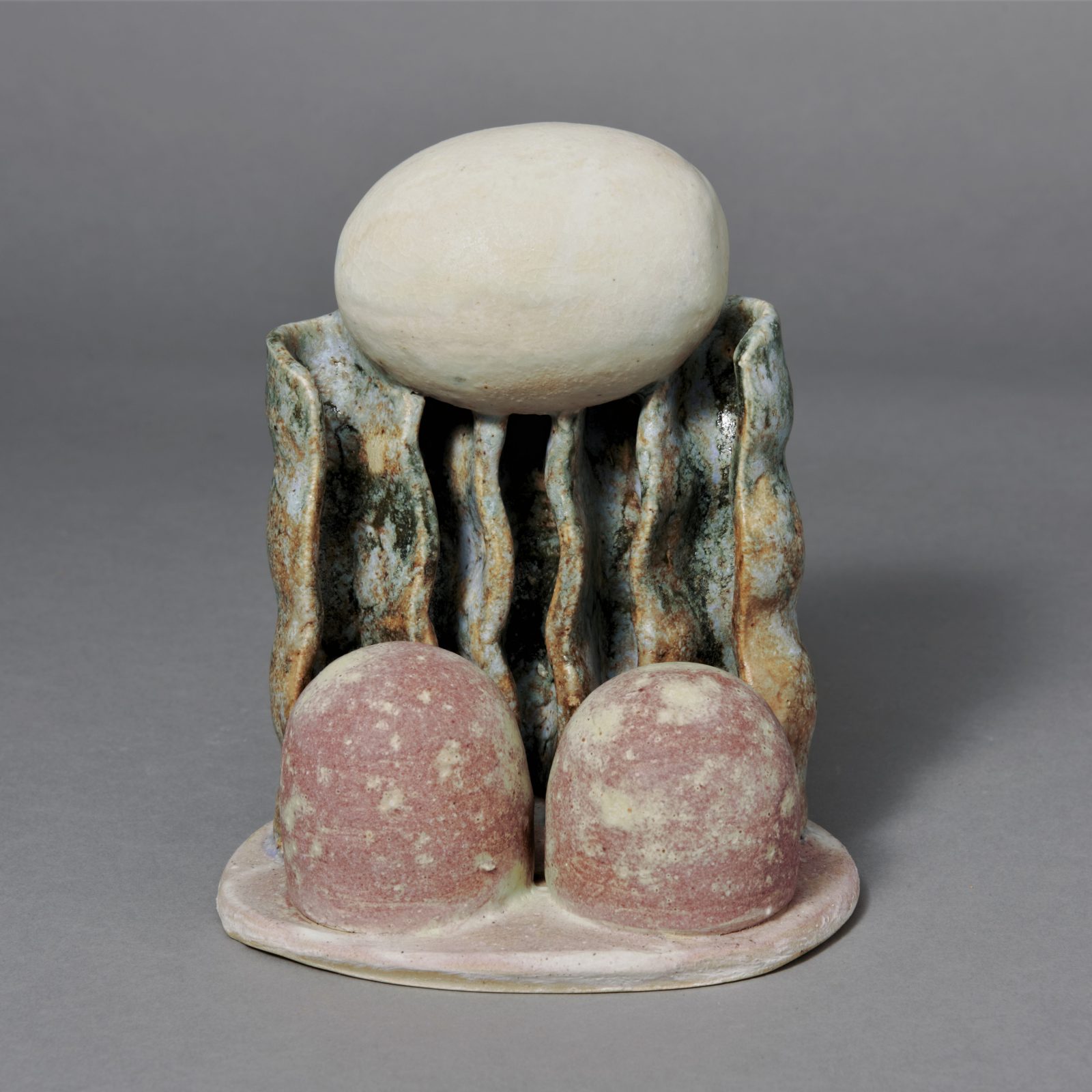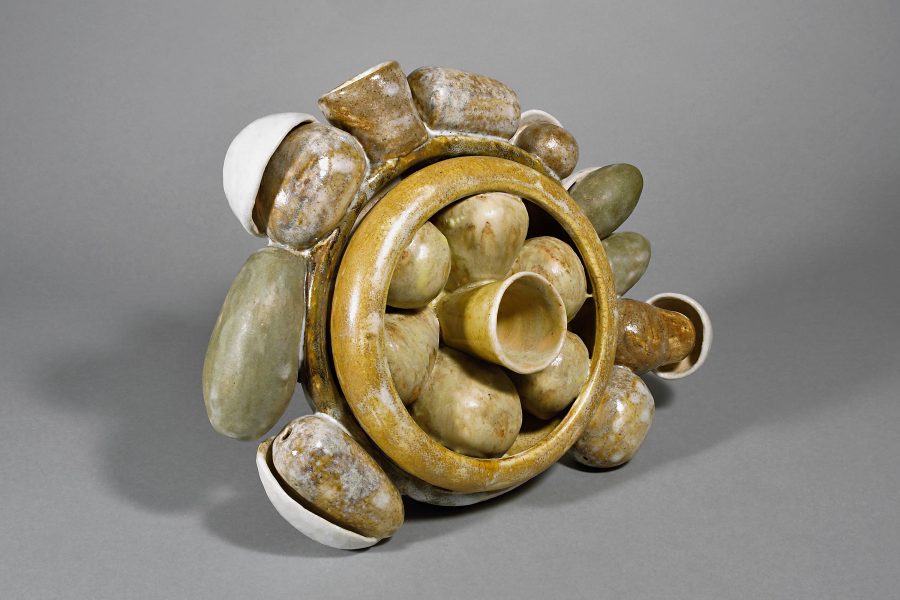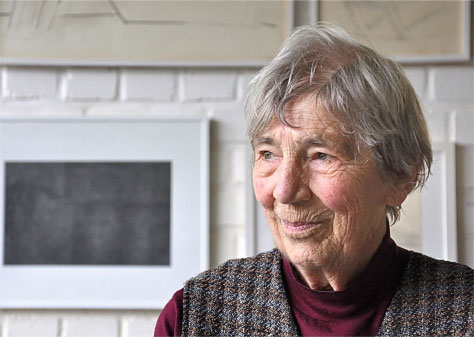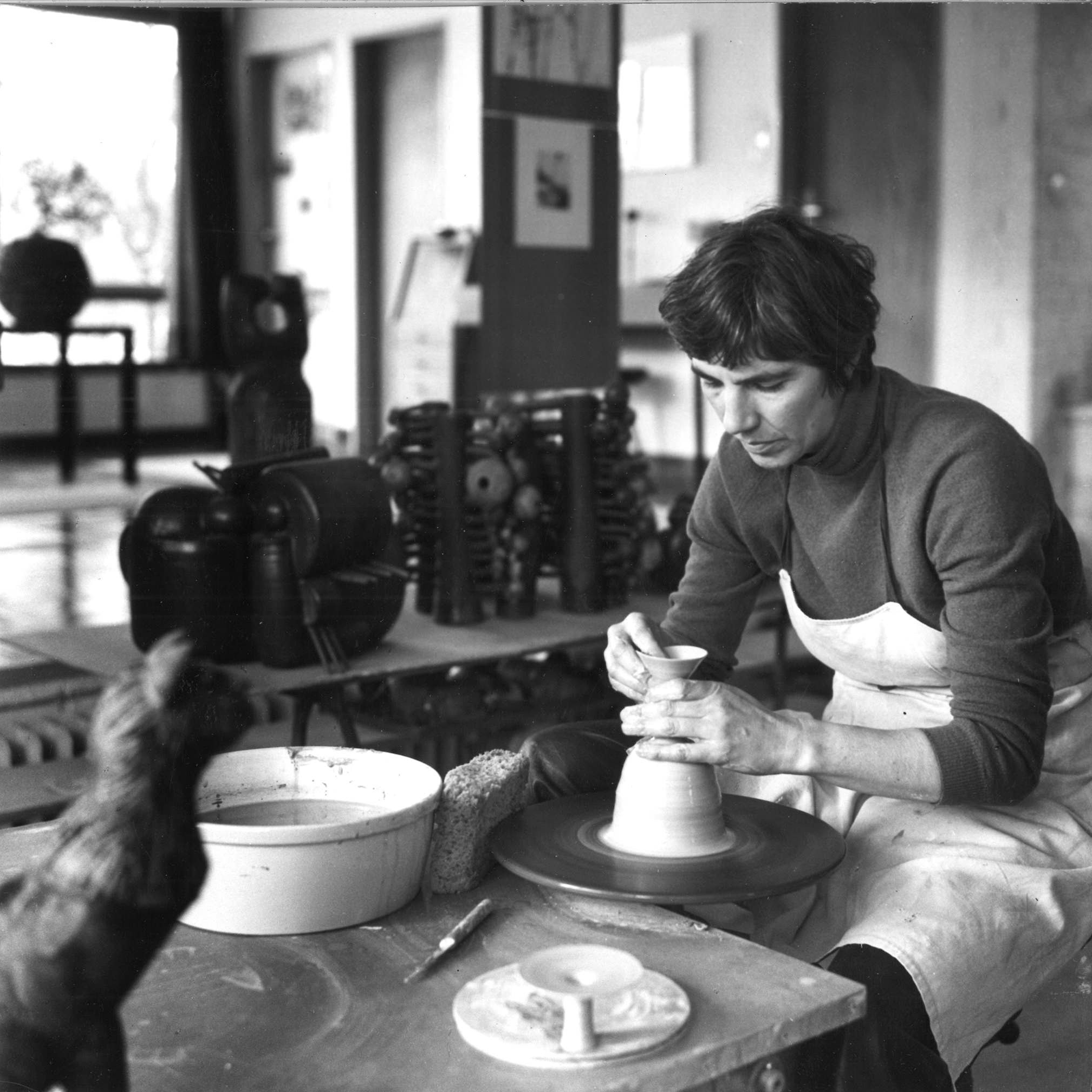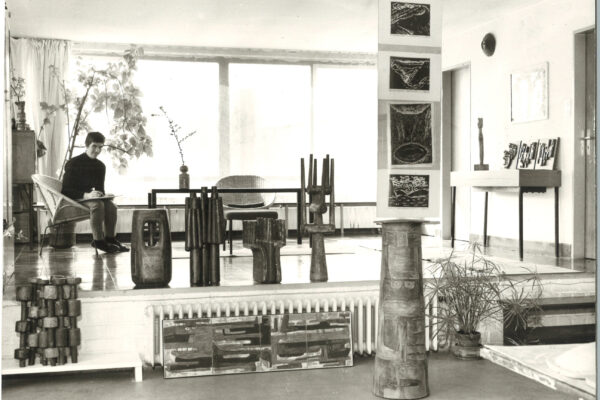Beate Kuhn
invisible placeholder
Ceramics Born of the Spirit of Music and Nature
On the death of the German ceramist Beate Kuhn
invisible placeholder
Repetition and variation – along side the overrated element of innovation, these are the fundamental principles of the arts from tradition to avant-garde. The fact that, when asked about the genesis and origins of her work, German ceramist Beate Kuhn always made reference to Neue Musik in the 20th century as a source of inspiration, this is not merely a personal peculiarity of hers.
For preference, she listened to the entirely atonal music of Luigi Nono when she was working, having grasped the structural analogies of these differing fields, and fruitfully and idiosyncratically like none other, intuitively transferred these utterly simple fundamental principles of working creatively to contemporary ceramics. Thus she invented for herself an entirely unmistakable idiom of her own, an astonishingly free form of ceramic sculpture made up of the authentic methods and techniques of pottery, assembling sculpture of the greatest complexity from infinitely varied, colourfully glazed, exclusively wheel-thrown elements, frequently challenging the frontiers of feasibility in terms of technique and skill.
She drew the stimuli for her subjects from, in the widest sense,the forms and creatures of nature, which she programmatically interpreted as animals or plants, or as an abstract interpretation of plants as organic compositions, by means of sequencing and assemblage to create sculptural forms. Aware of the vagaries of clay’s structural instability, she did this not spontaneously but meticulously, after a prepared structural design for everything from playful miniatures large scale architectural ceramics. In retrospect it is not hard to see – in the non-representational sequences linked to form agglomerations and clusters, and in volumes modulated in size, chromatics and rhythm – compositions translatable from three-dimensional spatiality into tonal temporality, which can be read in musical terms as linear, chordal and melodic scores without sacrificing any of their creative autonomy as ceramic sculptures.
It is surprising that no string quartet has yet dared to transform what in many respects are the score-like qualities of these forms into sound in compelling improvisations. It would have been the greatest pleasure for this sensitive soul.
It was not Beate Kuhn’s prescribed path that she should become a ceramist. She was born to artist parents on 15 July 1927 in Düsseldorf. Her father, Erich, was a sculptor and her mother, Lisa, a pianist. Although after graduating from school in 1947 in Neustadt in the Black Forest, where the family had been forced to move in the war, she would have loved to become a painter, she did not consider herself talented enough. She began to study art history in Freiburg, which made a lasting impression on her, the materially impoverished postwar era providing her with cultural riches. When artistic Modernism returned excitingly to Germany in its diverse forms, the heroes of the young art enthusiast were painters such as Paul Klee and Joan Miró. Then, in a pre-war catalogue, she found illustrations of vessels by ceramist Jan Bontjes van Beek and immediately saw her path.
invisible placeholder
invisible placeholder
As the apprenticeship she wanted with Richard Bampi in nearby Kandern did not materialise, in 1949 she began to study at the school of applied arts, the Werkkunstschule in Wiesbaden. After qualifying as a journeyman, she went on to the Werkkunstschule in Darmstadt under Theodor Schroeder. While still in the final stages of her course, she designed asymmetric vase forms for Rosenthal, including the flamboyant oval form with a lateral opening which became famous as the Kummet vase.
In 1953, she took over the pottery of her teacher in the village of Lottstetten, south Baden, together with Karl Scheid, who also trained at the school in Darmstadt. Here, Beate Kuhn painted organic tableware and anthropomorphic vessel sculptures, transferring to ceramics figural abstraction in the manner of her favourite painters. The Frankfurt Fair was the indispensable sales outlet for these avant-garde products created in the provinces.
In 1953, she took over the pottery of her teacher in the village of Lottstetten, south Baden, together with Karl Scheid, who also trained at the school in Darmstadt. Here, Beate Kuhn painted organic tableware and anthropomorphic vessel sculptures, transferring to ceramics figural abstraction in the manner of her favourite painters. The Frankfurt Fair was the indispensable sales outlet for these avant-garde products created in the provinces. Then in 1957, she finally relocated to Düdelsheim in Hesse, where she moved into a bungalow providing living and working space designed by her brother, an unusual one-room building, henceforth scene of her life and work. It was situated immediately adjacent to the new studio of Karl and Ursula Scheid and that of sculptor Bernhard Vogler.
With her language of forms consisting of sculptures assembled from thrown elements, which she developed at the end of the 1950s, the ever-charming Kuhn became an outstanding, highly respected figure in postwar German ceramics who anticipated later developments. She amassed recognition and prizes:
in 1968, she became a member of the Académie Internationale de la Céramique in Geneva, later she was a founder member of the German ceramics group, Gruppe 83. She was awarded State Prizes from Baden, Bavaria and Hesse, twice received the Westerwald Prize and most recently was honoured by the Lotte Reimers Foundation. She exhibited worldwide, museums in Germany, Europe and Japan hold examples of her work.
The German ceramist Beate Kuhn died on 10 December 2015, leaving behind an unparalleled ceramic wonderland.
Dr. Walter Lokau
invisible placeholder
Besides an immense number of private collections, Beate Kuhn is represented in all the museums of arts and crafts in Germany and in many museums worldwide.
Besides those already mentioned – Hetjens Museum and Keramion, these museums include: Schlossmuseum Aschaffenburg, Keramik-Museum Berlin, Kunstgewerbemuseum Berlin, Kunstsammlungen der Veste Coburg, Museum für moderne Keramik Deidesheim (seit 1993 Land Rheinland-Pfalz, Sammlung Hinder/Reimers), Museum für Kunsthandwerk Frankfurt am Main, Museum für Kunst und Gewerbe Hamburg, Kestner-Museum Hannover, Sammlung der Hoechst AG, Keramikmuseum Westerwald Höhr-Grenzhausen, Badisches Landesmuseum Karlsruhe, Museum für Angewandte Kunst Köln, GRASSI Museum für Angewandte Kunst Leipzig, Kunsthalle Mannheim, Landesmuseum für Kunst und Kulturgeschichte Oldenburg, Kulturgeschichtliches Museum Osnabrück, Stiftung Schleswig-Holsteinische Landesmuseen Schloss Gottorf (Schleswig), Emslandmuseum Schloss Clemenswerth (Sögel), Württembergisches Landesmuseum Stuttgart, Musée Ariana Genf, Mimar Sinan Üniversitesi Istanbul, Victoria and Albert Museum London, Museum Boijmans van Beuningen Rotterdam, Taipeh Fine Arts Museum, National Museum of Modern Art Tokyo, Museum Bellerive Zürich
invisible placeholder
invisible placeholder
